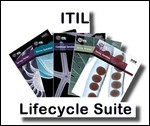 Title: Itil Lifecycle Publication Suite, Version 3: Continual Service Improvement, Service Operation, Service Strategy, Service Transition, Service Design
Title: Itil Lifecycle Publication Suite, Version 3: Continual Service Improvement, Service Operation, Service Strategy, Service Transition, Service Design| Link type | Link | Password |
|---|---|---|
| Mirror | http://www.paid4share.net/file/11240/0113310501-Itil-Lifecycle-rar.html |